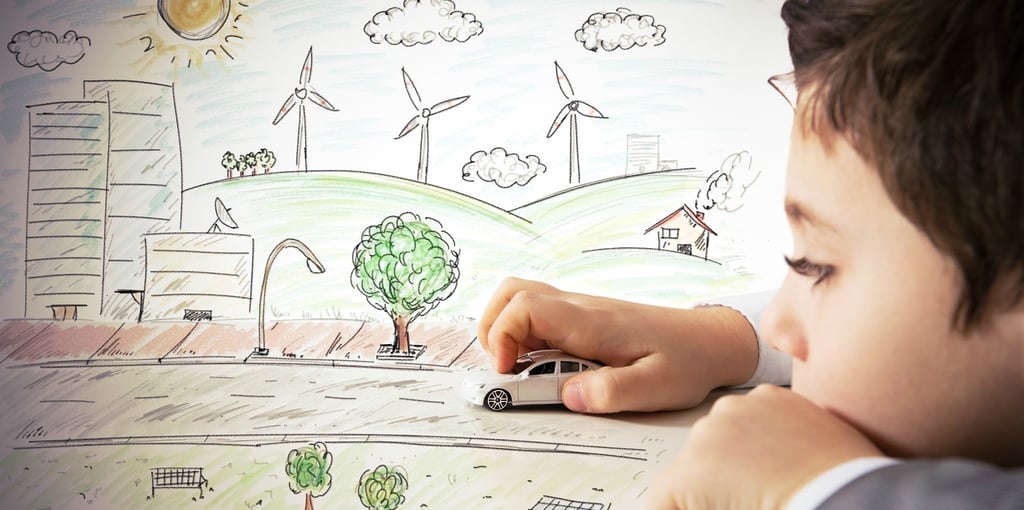
As a follow-up to her last blog, "How to 'Green' your Classroom", Peachjar brings you another guest blog from writer, editor, and musicophile who's passionate about vegetarianism and sustainable eating - Lauren Pezzullo. As an editor for Modernize, Lauren writes about energy-efficient living in the home. She's currently writing her debut novel.
Finding creative and exciting ways to talk about the environment can be a difficult task for teachers. Most children understand the basics behind the “reduce, reuse, recycle” mantra, but explaining energy use and consumption in a tangible way can be much harder than reciting a few key words. Teaching through experience, though, is one of the best ways to help students learn about the world around them, and the environment is no exception. After you’ve finished ‘greening’ the physical space of your classroom, the next logical step is adding environmentalism to your curriculum. Here are a few of our favorite engaging ways to ‘green’ your lesson plans.
Energy consumption
Talking about energy consumption in a tangible and meaningful way is a straightforward process for classroom teachers, and it works particularly well in math and science lessons. Long-term studies on energy use, both in school and at home, can help students understand just how much electricity, water, and heat they consume on a daily (or monthly, or annual) basis. Have your students monitor their energy usage over a period of time in each of these areas, calculate totals when finished, and then discuss how more efficient alternatives can potentially save both money and energy. If you teach languages or history, consider hosting an in-class debate where students discuss the potential benefits and drawbacks of energy efficiency, including the implications on budgets, the environment, and creative ways to consume less energy on a regular basis. Finally, students of all ages can create their own experiments documenting electricity use and water consumption and share their results with the rest of the class and begin a conversation about decreasing energy usage.
Renewable energy
Conversations and lessons about energy efficiency would not be complete without discussing renewable energy. Sources such as solar, wind, and water power can drastically reduce the negative impact on the environment because they never run out and have no detrimental emissions. The concept of renewable energy may seem a daunting one to teach, but you can easily create your own engaging and fun projects by building your own solar panels, wind turbines, or miniature hydroelectric power stations. Enhance math and science lessons by calculating energy bill savings with solar panels (investigating your school or other local solar-equipped building where appropriate) and talking about how solar panels work. To take your lesson planning to the next level, arrange a trip to a local hydroelectric dam, solar park, or other renewable energy source. You can also invite a solar professional or energy supplier to the classroom to talk about the benefits of renewable energy.
Waste
Waste reduction is another important part of an environmental consciousness curriculum. While your classroom is probably already prepared to recycle unused materials (if not, see our tips in Part 1), discuss different types of waste and the disposal process to help students learn how to reduce waste and make conscious decisions along the way. Link your classroom recycling schemes to schoolwide projects where students can measure landfill waste against recycling and see which group, class, or grade can recycle the most over a period of time. Host a debate or presentation where students can discuss different ways to decrease landfill sizes and reuse everyday materials can help your class link theory and practice. Finally, tackle your school’s food waste and have your class help set up a compost heap or school garden—or, take a trip to a local farm, city garden, or landfill to learn more about the science behind decomposition and growth.
The natural world
If your school has a large and functional outdoor area, one of the best ways to make your lesson plans greener is by getting outside. Students who have the opportunity to study the world around them through immersion and experience rather than textbooks and presentations will be better equipped with compassion for the environment in the future. Whether or not you actually study environmentalism in your outdoor lessons, the time spent outside will give students a chance to think about the world in a different way and build bonds with nature. Specific outdoor green lesson planning is straightforward as well. Get students involved with gardening, hiking nature trails, honing survival skills, composting, observing ecosystems, and interacting with local flora and fauna. We particularly love the idea of adopting and nurturing living eggs, monarch butterflies, earthworms, and other small animals found in your local area.
.png)